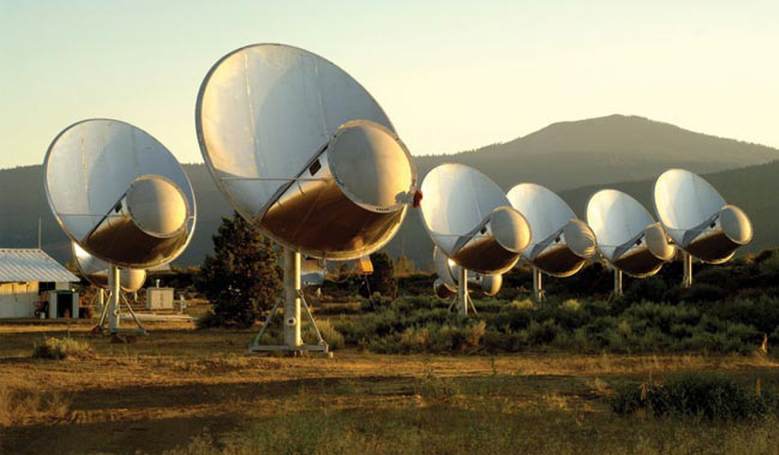A machine learning algorithm is helping researchers at Breakthrough Listen – a SETI initiative to find signs of intelligent life in the Universe – to learn more about a strange, repeating Fast Radio Burst (FRB) source, that is unlike any others identified so far.
FRBs are bright pulses of radio emission that last for just milliseconds. Their fleeting appearance makes their location hard to pin down but they are generally thought to originate from distant galaxies and from a multitude of phenomena, such as stellar flares, evaporating black holes and from the obliteration of neutron stars when they collide.
Around 35 separate bursts from varying regions on the sky have been detected since they were first identified in 2007, but only one is known to send out repeated signals; FRB 121102. During a period of observation last year with the Green Bank Telescope (GBT) in West Virginia, astronomers detected 21 emitted bursts from FRB 121102 alone in the space of an hour.
Bursts from FRB 121102 originate from a dwarf galaxy 3 billion light years from Earth, but what is causing this frequent flurry of radio flashes? Many theories abound, including of course that they could be a sign of alien technology from an advanced civilisation.
Collecting information to study these mysterious signals is not a problem; the 5 hour observation slot last year racked up a staggering 400 terabytes (TB) of data in one sitting. It is wading through the data and analysing it that is the difficulty however.
So, what better way to plough through the data than to get someone or something else to do it for you. In this case artificial intelligence in the form of a machine learning algorithm.
Built by a team of scientists including Gerry Zhang from UC Berkeley and the lead author of a recent research paper, Andrew Siemion, and Bernard M. Oliver from the SETI Institute, the team taught their algorithm – known as a convolutional neural network – to recognise the 21 bursts found by the classical search method and then set it loose on the colossal dataset to find bursts that this approach missed.
"Gerry's work is exciting not just because it helps us understand the dynamic behavior of FRBs in more detail," remarked Siemion, "but also because of the promise it shows for using machine learning to detect signals missed by classical algorithms." He went on to say that “these new techniques are already improving our sensitivity to signals from extraterrestrial technologies.”
It is not just FRBs that are being identified and flagged for further examination by AI either; using the Allen Telescope Array (ATA), radio signals from other celestial objects of interest, such as the seven Earth-sized TRAPPIST-1 system of exoplanets that was discovered last year are also being targeted.
ATA, which is situated at the Hat Creek Observatory in California, is SETI’s dedicated instrument for scouring the skies to look for spurious radio signals. With a very wide field-of-view, ATA is being updated to provide unprecedented instantaneous frequency coverage between 1,000 to 15,000 MHz, to offer improved sensitivity and greater reliability in their search for intelligent life beyond our Earthly borders.
“Results hint that there could be vast numbers of additional signals that our current algorithms are missing and clearly demonstrate the power of applying modern data analytics and AI tools to astronomical research,” said SETI Institute President and CEO Bill Diamond. “Applying these techniques in the search for evidence of extraterrestrial technologies, or technosignatures, is incredibly compelling, together with addressing the tantalising phenomena of FRBs” he continued.











